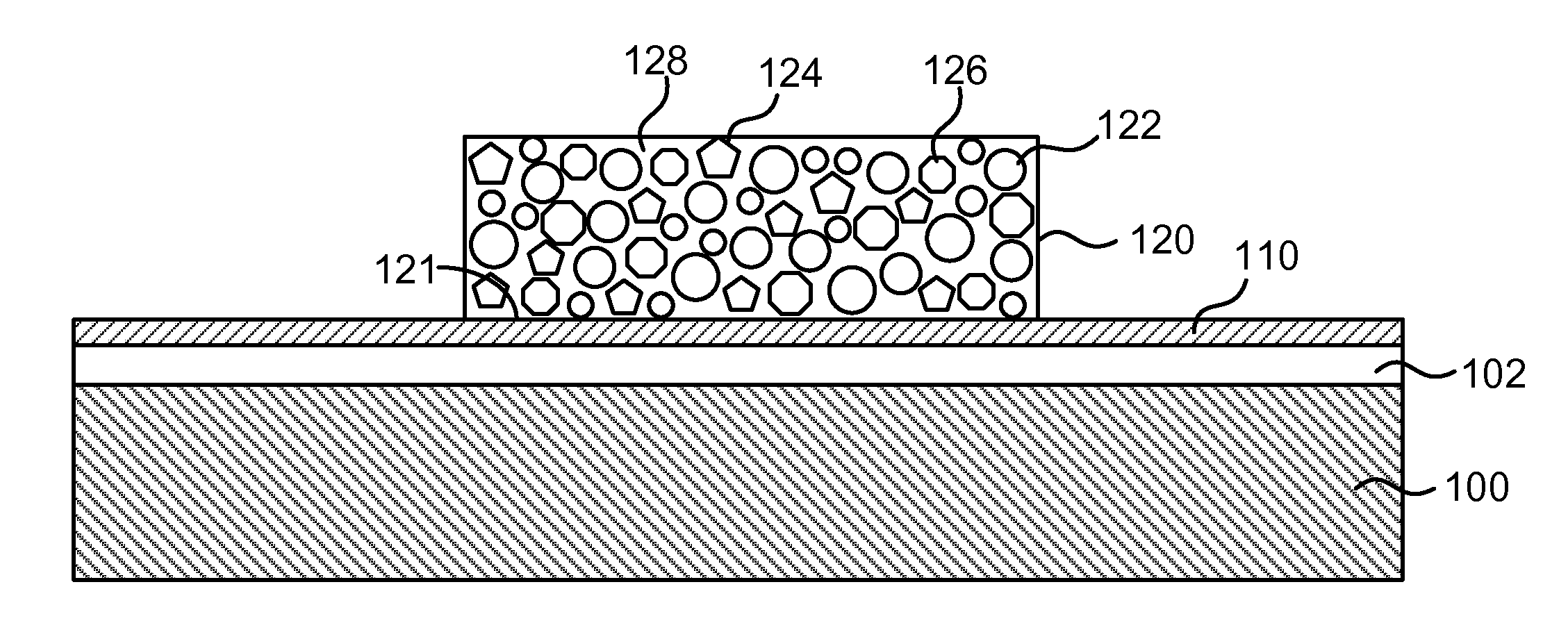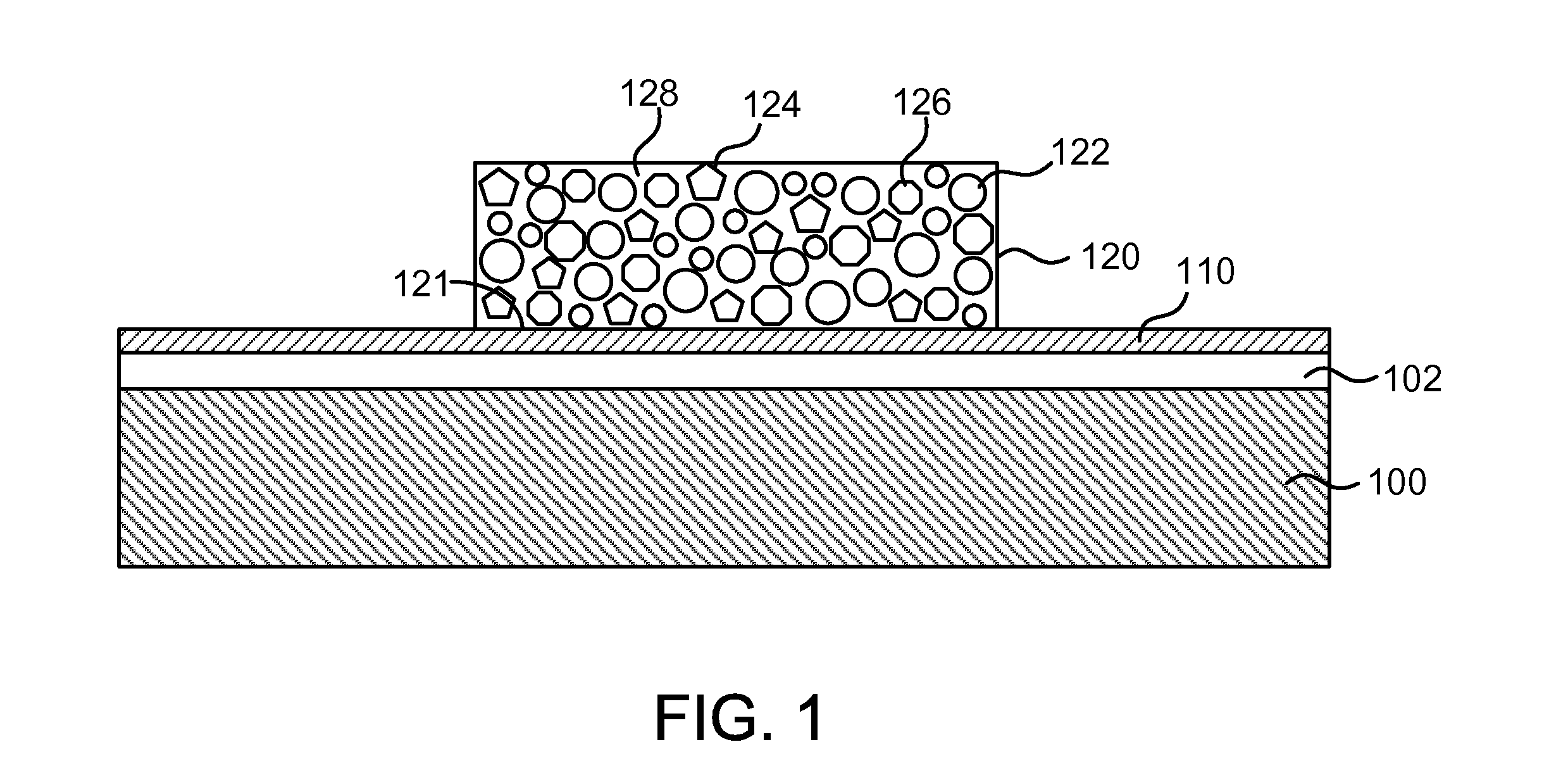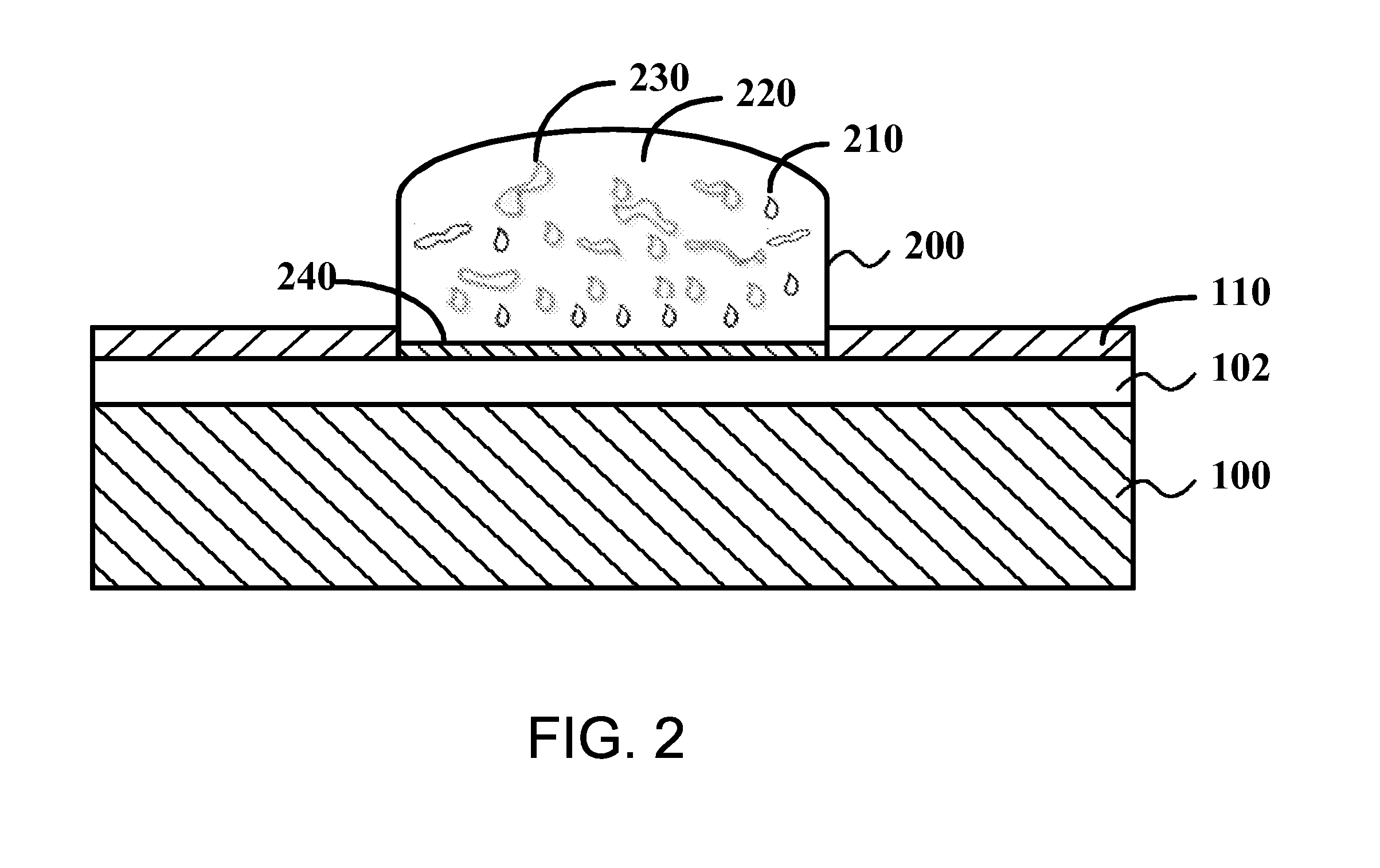Conductive paste for front electrode of semiconductor device and method of manufacturing thereof
a semiconductor device and front electrode technology, applied in the direction of electrically conductive paints, conductors, metal/alloy conductors, etc., can solve the problems of many physical constraints in the manufacturing process, affecting the performance of solar cells, and inexhaustible source of clean energy from solar energy, so as to improve the contact between metal and semiconductor devices and reduce contact resistance , the effect of low viscosity
- Summary
- Abstract
- Description
- Claims
- Application Information
AI Technical Summary
Benefits of technology
Problems solved by technology
Method used
Image
Examples
example 1
[0087]The conductive paste for forming a front electrode of crystalline silicon-based solar cell includes, according to the total weight based on 100 parts, 85 wt % of metallic powder, 3 wt % of crystal corrosion binder, 2 wt % of glass frit, and 10 wt % of organic carrier. The crystal corrosion binder is substantially PbTe4O9 compound. The metallic powder is silver powder. The glass frit is made from Pb—Si—Al—B—O-based glass material containing 81 wt % of PbO, 16 wt % of SiO2, 2 wt % of Al2O3, and 1 wt % of B2O3. The organic carrier includes 70 wt % of Terpineol organic solvent, 14 wt % of Ethyl Cellulose binder, 10 wt % of wetting and dispersing agent, 5.5 wt % of thixotropic agent, and 0.5 wt % of microcrystalline wax.
[0088]A method of preparation of the conductive paste for forming a front electrode of crystalline silicon-based solar cell includes:[0089]1) Preparation of Corrosion Binder: Preparing a telluric acid solution having a concentration of 0.1 mol / L and heating to about...
example 2
[0093]The conductive paste for forming a front electrode of crystalline silicon-based solar cell includes, according to the total weight based on 100 parts, 83 wt % of metallic powder, 4 wt % of crystal corrosion binder, 1.6 wt % of glass frit, and 11.4 wt % of organic carrier. The crystal corrosion binder is substantially Pb3TeO5 compound. The metallic powder is silver-coated nickel powder. The glass frit is made from Bi—Si—B—Zn—O-based glass material containing 70 wt % of Bi2O3, 15 wt % of SiO2, 3 wt % of B2O3, 7 wt % of ZnO, and some other oxides including 3.5 wt % of BaO and 1.5 wt % of CuO. The organic carrier includes 50 wt % of Lauryl Alcohol Ester organic solvent, 40 wt % of Polymethacrylates binder, 5 wt % of wetting and dispersing agent, 4 wt % of thixotropic agent, and 0.5 wt % of DBP.
[0094]A method of preparation of the conductive paste for forming a front electrode of crystalline silicon-based solar cell includes:[0095]1) Preparation of Corrosion Binder: Selecting PbO a...
example 3
[0099]The conductive paste for forming a front electrode of crystalline silicon-based solar cell includes, according to the total weight based on 100 parts, 80 wt % of metallic powder, 6 wt % of crystal corrosion binder, 2.5 wt % of glass frit, and 11.5 wt % of organic carrier. The crystal corrosion binder is substantially PbTeCO5 compound. The metallic powder is silver-coated copper powder. The glass frit is made from Zn—B—P—Li—O-based glass material containing 36 wt % of B2O3, 22 wt % of ZnO, 36 wt % of P2O5, 1 wt % of Li2O, 4 wt % of MgO, and 1 wt % of Mn2O. The organic carrier includes 65 wt % of Terpineol organic solvent, 20 wt % of Alkyd resin binder, 0.1 wt % of wetting and dispersing agent, 12.5 wt % of thixotropic agent, and 2.4 wt % of PVB.
[0100]A method of preparation of the conductive paste for forming a front electrode of crystalline silicon-based solar cell includes:[0101]1) Preparation of Corrosion Binder: Selecting PbO and TeO2 with molar ratio of 1:1 ratio to form a...
PUM
 Login to View More
Login to View More Abstract
Description
Claims
Application Information
 Login to View More
Login to View More - R&D
- Intellectual Property
- Life Sciences
- Materials
- Tech Scout
- Unparalleled Data Quality
- Higher Quality Content
- 60% Fewer Hallucinations
Browse by: Latest US Patents, China's latest patents, Technical Efficacy Thesaurus, Application Domain, Technology Topic, Popular Technical Reports.
© 2025 PatSnap. All rights reserved.Legal|Privacy policy|Modern Slavery Act Transparency Statement|Sitemap|About US| Contact US: help@patsnap.com



